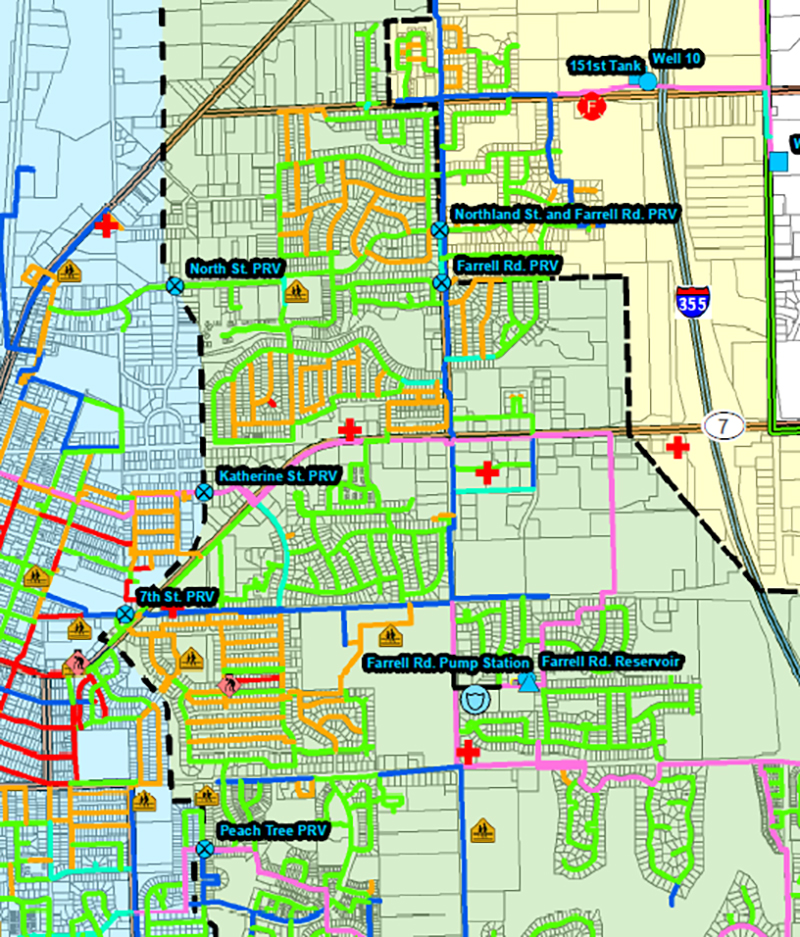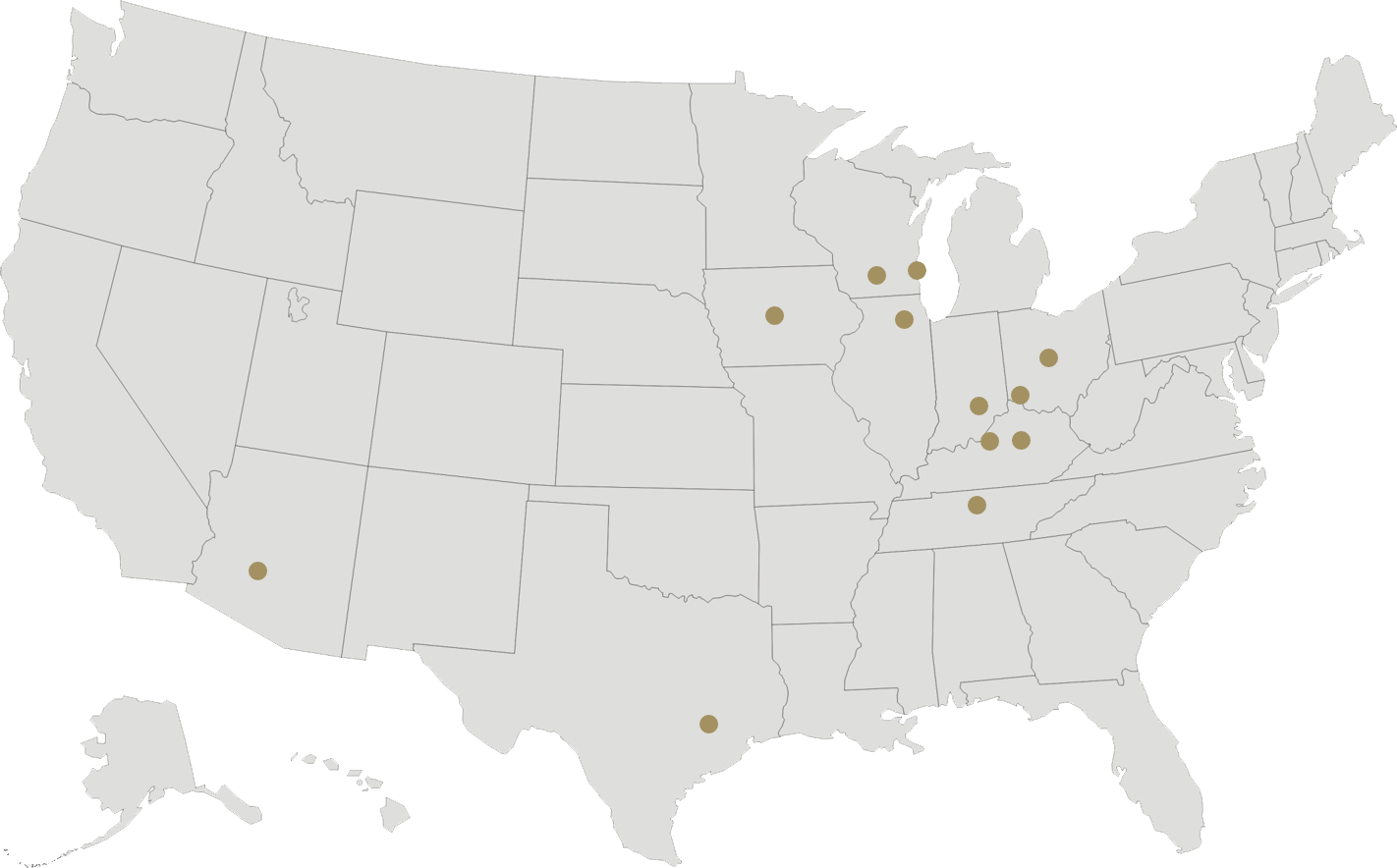The City of Lockport hired us to evaluate the water quality within its distribution system and develop short- and mid-term plans for improvements. The recently finished reconstruction of I-355, which runs the entire north-south length of the city, has resulted in tremendous potential growth for the city. The City had established a strategy for accommodating future growth demands and addressing compliance issues, and our firm’s water system master planning experience was fundamental in the successful implementation of this strategy.
Water Model Update
Our project team utilized WaterGEMS modeling software to perform a system update by adding current GIS maps and operational information to the City’s previous water model files. The model was recalibrated by simulating field fire flow tests to demonstrate that field results could be duplicated within the model. In the past, the City had chosen multiple engineers to create several planning documents concerning water quality conditions. Our water model update was essential in identifying which of the previously unfulfilled report recommendations were still necessary.
Capital Improvement Planning and Pipeline Replacement Prioritization
Our systematic review of the City’s previous engineering studies also included the use of an updated computer model to generate additional recommendations, as well as analyze the benefits provided by previously recommended projects. We evaluated system pressures, fire flow availability, and water quality results, and created a pipeline prioritization model to aid in the decision-making process, and a prioritization scoring matrix to apply scores for categories such as water main breaks, pipe age, and adjacent critical areas.
Water model results and multiple GIS layers were intersected so that the scoring matrix of multiple user-defined parameters was applied to each pipeline. The result was a list of each pipeline in the system, specifying the most critical areas throughout the city. We then created construction cost opinions for pipelines with the highest priority scores and allocated an appropriate portion of the City’s overall budget to each pipeline along 18-month, 2-, and 5-year timeframes. Ultimately, this procedure created an easily discernable approach for staff and elected officials to follow to implement required distribution system improvements.
On-Demand Water System Modeling
Future growth areas were modified to include proposed development water mains and demands, which required projection of pressure zone boundaries beyond the consideration of previous studies. We also analyzed the performance of proposed developments, keeping the needs of adjacent, undeveloped parcels in mind. During update of the water model, we provided additional support to staff, enabling them to confidently plan and make capital decisions regarding the existing distribution system. We also gave prompt feedback concerning the proposed infrastructure and performance needs of both the present and ultimate distribution systems. Our services enabled the City to make decisions that were pro-growth, while still maintaining the best interest of its existing customers and staff.

